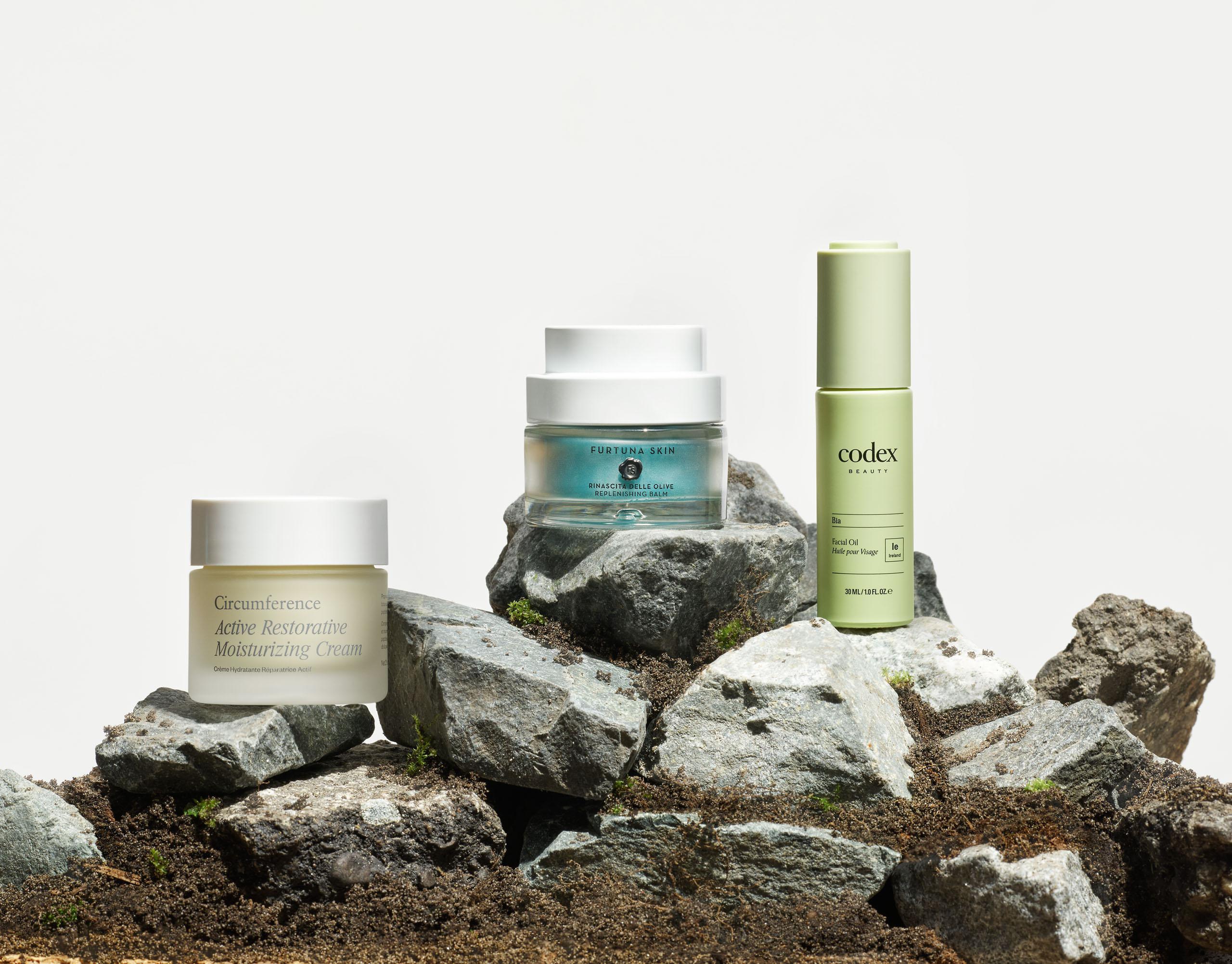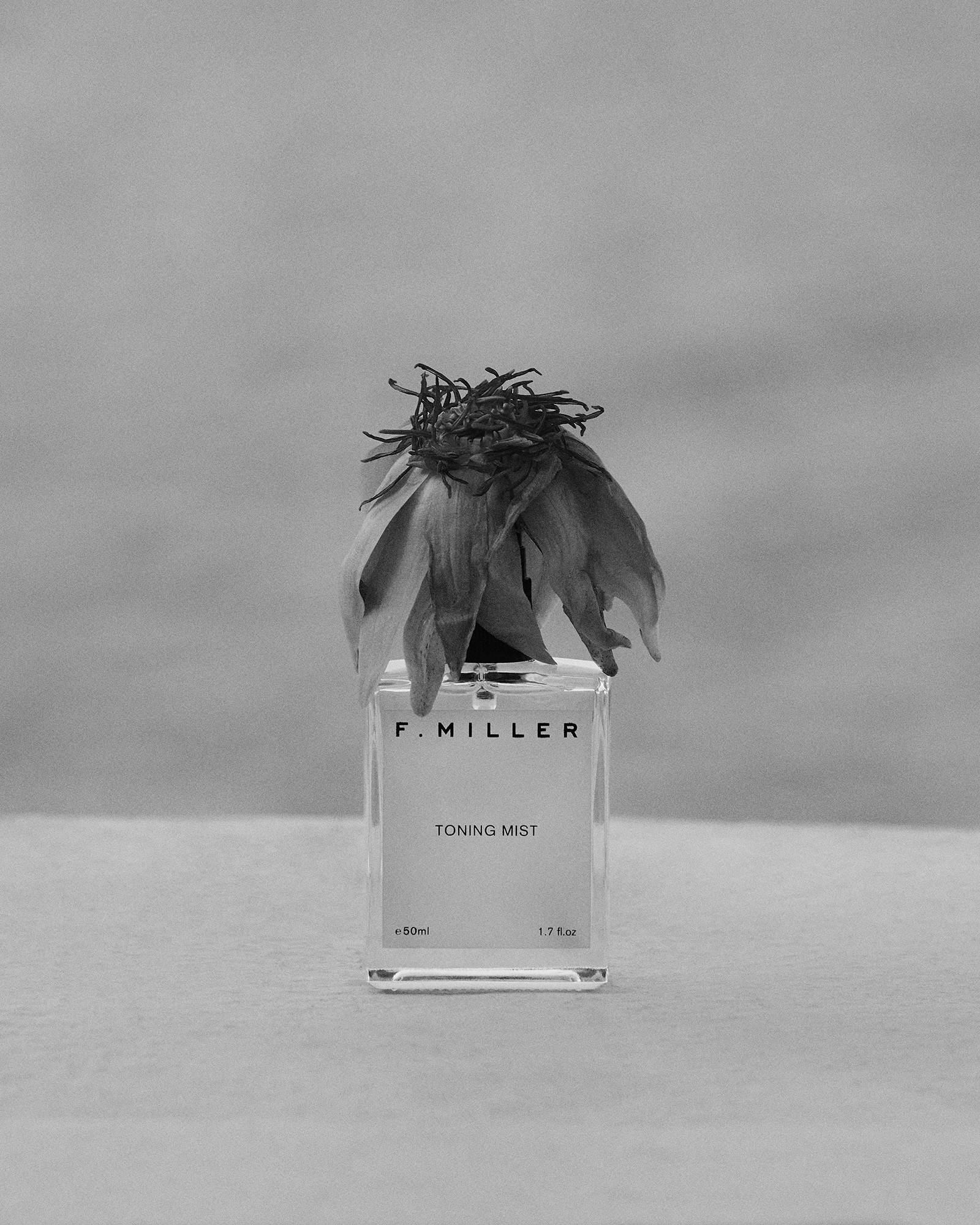Smart, Sustainable Agricultural Practices Are Transforming the Beauty Industry
Plant magic.

There has been an agricultural shift in beauty, as brands opt for sustainable alternatives in their products. Circumference’s Active Restorative Moisturizing Cream, Furtuna Skin’s Rinascita Delle Olive Replenishing Balm, and Codex Beauty’s Bia Facial Oil are paving the way for a greener approach to skin care.
As the pandemic upended the world last spring, spiky ferns, chicken coops, and composting bins turned out to be a grounding source of comfort for the homebound. Taking up farming or developing a green thumb became a way to pass time, connect to nature, and avoid pantry shortages. All this time in the dirt has sharpened our perspective on what it means to grow ingredients and upped the ante on being eco-friendly in all areas of our lives.
“As people become further educated on topics like sustainability and biodiversity, there’s more interest and attention being paid to meaningful changes we can make in our daily routines,” says Tracey Ryan, an Ireland-based herbalist and formulator for the science-backed skin-care brand Codex Beauty. For many, that means expecting more from the beauty products we slather on. At a moment when terms such as “clean beauty” and “wild-crafted” are ubiquitous but vaguely defined and largely unregulated, a new generation of farm-core beauty brands is proving their natural cred beyond romantic storytelling and, instead, thinking about regenerative practices, crop rotations, and soil composition—like true agriculturalists.
One trailblazer at the forefront of this movement is former model Agatha Relota Luczo, who got into farming long before the lockdown. In 2009, she purchased a 750-acre farm in Sicily that once belonged to her husband’s grandmother. Last year, Luczo, along with beauty industry veteran Kim Walls, launched Furtuna Skin, a range of healing serums, oils, and balms made with ingredients from her farm, which are foraged according to strict standards: a botanist helps gather tough, nutrient-rich plants—everything from borage to hawthorn to calamint—in their natural habitats and clips only what’s needed, leaving the rest of the plant intact so it can continue to flourish. Every yield is potent and well utilized. “From the olive tree alone, we use the oil to make our ultra-nourishing base, the leaves to make antioxidant-rich olive-leaf water, the pits to make a naturally exfoliating powder,” Luczo says.
It’s the antithesis of monoculture, the mass cultivation of a single species, which depletes the soil. A seedbank also preserves the DNA of this Sicilian plant kingdom for the future.
Brands without access to acres and tractors of their own are seeking out creative collaborations to further green their own practices. New York–based Circumference, for example, recently teamed with Bedell Cellars, a sustainable winery on the North Fork of Long Island, to upcycle agricultural biowaste into its chic, circular skin care. First Bedell sends grape leaves, the discarded by-product of its winemaking process, to Circumference, which then slow-extracts the complexion-boosting nutrients—antioxidants and polyphenols—from the leaves to create a potent base for its Active Restorative Moisturizing Cream. Afterward, Circumference returns the leaf mulch to Bedell for next season’s compost, closing the sustainable loop.
Other pivots in this space are even more unexpected, according to Ryan, who heads the formulations for Codex Beauty. Consider the bog myrtle featured in Codex Beauty’s Bia Facial Oil, which is grown in the midlands of Ireland by a company that previously collected the bog’s peat to generate electricity but now grows native species of plants and plans to reduce carbon emissions by 75 per cent by 2030. This, as Ryan points out, “is something for a company that burned fossil fuels until recently.”
In other areas, change has been harder to enact. For example, the harvesting of palm oil has contributed to massive deforestation. Many brands pledge not to use it but then trade palm for “another cheap and stable oil,” Ryan says, such as coconut, which presents other environmental issues. “To really impact sustainability and protect biodiversity,” Ryan says, “we need to improve our consumption habits.”
England-based Haeckels is addressing consumption with refreshingly smart solutions. The brand’s Bio Restore Membrane eye masks are grown to order, meaning there’s no standing inventory that can expire and then create waste. Instead, the mask’s soothing brew of agar, aloe vera, cucumber, hyaluronic acid, and other natural ingredients is mixed up only once a customer places an order.
Another growing trend is “living” packaging constructed from mycelium—fungus—that’s a biodegradable, climate-friendly alternative to Styrofoam. Hudson Hemp, a company that farms in New York’s Hudson Valley, is using this sturdy material to package its Treaty line of CBD-infused wellness tinctures. For co-founders (and sisters) Freya and Melany Dobson, the packaging aligned with their regenerative agriculture practices, which focus on replenishing eco-systems, nurturing biodiversity, and boosting soil carbon. Against this backdrop, Freya sees regenerative beauty as the next step beyond merely natural or “clean,” explaining, it’s “beauty that restores our Earth’s resources.”

